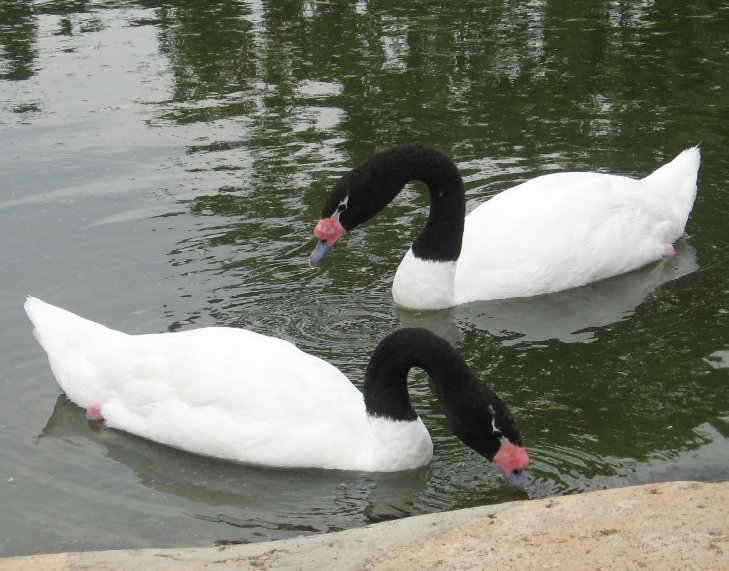

Cygnus melanocorypha
Black-necked swans are the smallest species of swan. They breed in Patagonia, Tierra del Fuego and on the Falkland Islands. In winter, this species migrates northwards to Paraguay and southern Brazil.
Black-necked swans spend most of their time in the water. They are poor at walking on land because their legs are set far back on their bodies to aid swimming. While they have difficulty taking flight, once in the air they are strong fliers and can cover long distances. They are one of the fastest fliers of the eight swan species, often reaching speeds of 50 miles per hour.
Black-necked swans breed from July to November. The pen, or female swan, lays three to seven eggs in a nest surrounded by dense vegetation close to the water. The pen incubates the eggs for about 36 days while the male, called a cob, protects the pen and the eggs. This duty is so important that the cob could go days without eating. Once the cygnets are born, they are carried around on the parents’ backs for up to four weeks.
Picture taken in the Attica Zoological Park, Athens, Greece, in June 2007.
Genus Cygnus
Tribe Anserini
Subfamily Anserinae
Family Anatidae
Order Anseriformes
Class Aves
Subphylum Vertebrata
Phylum Chordata
Kingdom Animalia
Life on Earth
Index